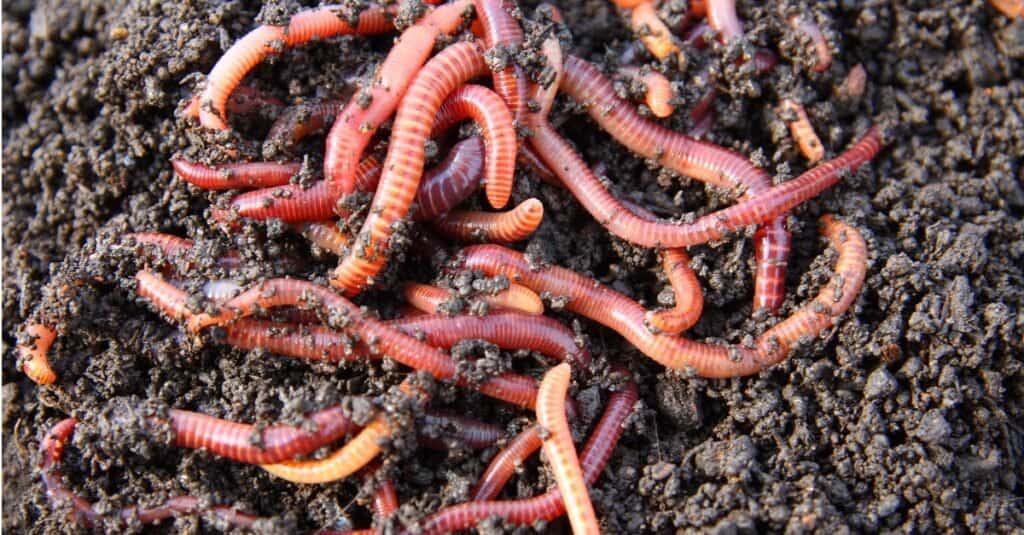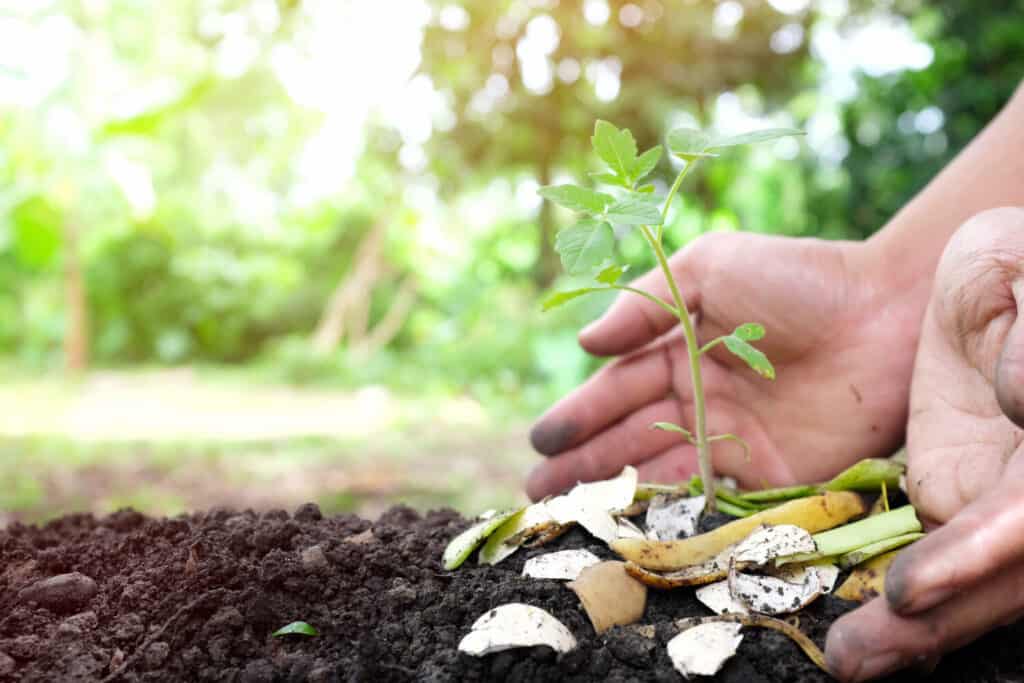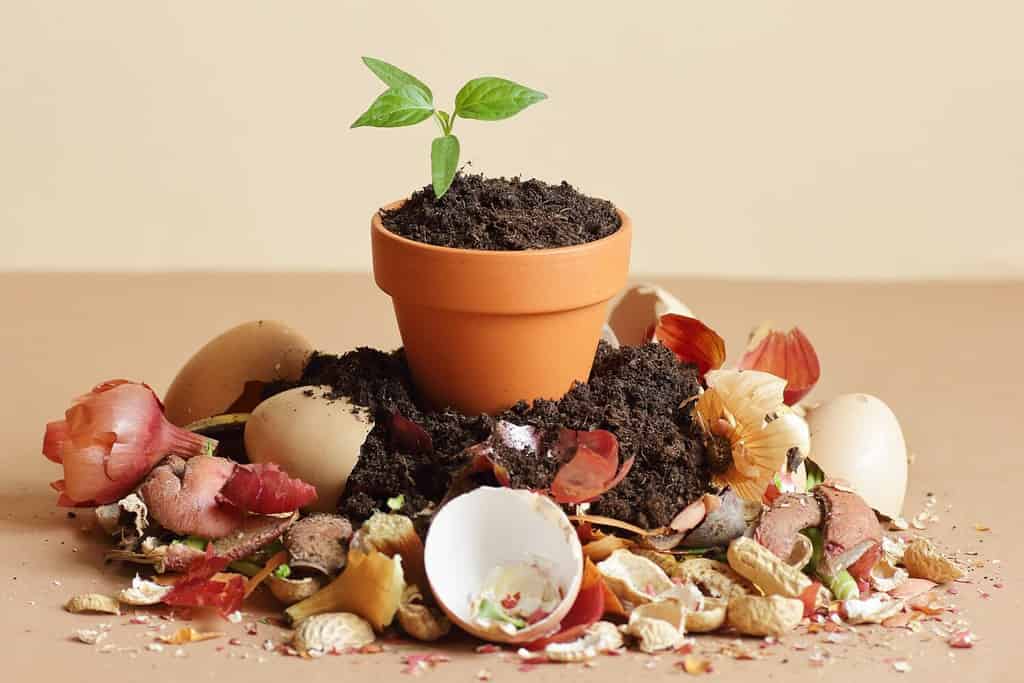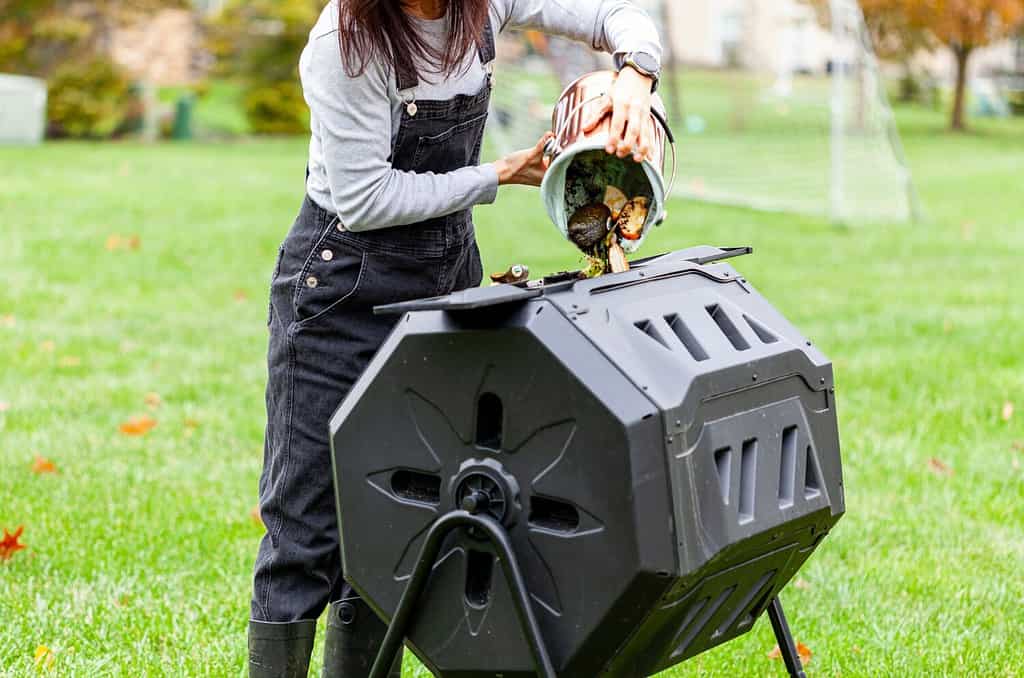Sustainable living and environmentally conscious practices are becoming a movement. Composting stands out as a simple yet highly effective way to join this ever-growing trend while reducing waste and nurturing our planet. While traditional composting methods are well-known, we are going to explore 5 unique homemade compost solutions. Uncover innovative techniques and creative ideas that will divert organic materials from landfills and enhance the quality of your soil.
What Is Composting?
Composting is a natural, eco-friendly process that transforms organic materials into nutrient-rich fertilizers. It is a sustainable way to recycle kitchen and yard waste, diverting it from landfills while also creating a valuable resource for gardens and landscapes. The key elements of composting include:
- Organic materials: Composting primarily involves organic materials, such as fruit and vegetable scraps, coffee grounds, grass clippings, and leaves.
- Decomposition: Microbial activity causes the organic materials to break down. Bacteria, fungi, and other microorganisms play a crucial role in the decomposition process.
- Aerobic vs. anaerobic: Composting occurs in either an aerobic (with oxygen) or anaerobic (without oxygen) environment, depending on your method.
- End product: Composting creates a nutrient-rich compost (fertilizer), often referred to as “black gold.” Additionally, add compost to soils to enhance fertility, structure, and water retention.

Composting can reach temperatures high enough to kill weed seeds and disease pathogens, making it not only an eco-friendly practice but also a natural method for sanitizing the environment.
©Jerome.Romme/Shutterstock.com
Creative Homemade Compost Solutions
1. DIY Bokashi Bucket
The Bokashi composting method is a unique and efficient way to transform kitchen scraps into fertilizer. Unlike traditional composting, Bokashi comes from the Japanese word for “fermented organic matter.” It is an anaerobic (no oxygen) process that relies on the power of beneficial microorganisms to ferment the organic matter.
In this method, a special mix of microorganisms called ‘Bokashi bran’ accelerates the breakdown of kitchen waste, including meat, dairy, and cooked leftovers. Unlike traditional composting, Bokashi can handle a wider variety of materials, making it an excellent choice for urban or small-space composting solutions.
Benefits of Bokashi Composting
Bokashi composting offers several advantages. Firstly, it allows you to compost a broader range of materials that might typically be avoided in traditional compost bins due to the risk of pests or odors. This includes citrus peels, cooked food, and even small bones. Secondly, Bokashi is a quick process, often taking just a few weeks to produce fertile, humus-rich material.
DIY Bokashi Compost
To use the Bokashi method at home, follow these steps:
- Purchase 2,5-gallon plastic buckets with tight-fitting lids.
- Drill 20 to 25 holes in the bottom of the first bucket. Additionally, aim for even spacing using a ⅛- to ¼-inch drill bit.
- Set your bucket with holes inside the second bucket.
- Add your food scraps and inoculants to the bucket. An inoculant, like Bokashi bran, rice, or sawdust, stops you from smelling the fermenting food and adds microorganisms like lactic acid and yeast to aid the process.
- When your bucket is full, replace the lid and let it steep for 10 days.
- Drain the liquid from the outer bucket every other day. Dispose of the liquid or dilute it with water and use it in your landscape or garden.
These steps make Bokashi composting an environmentally friendly, low-odor, and efficient method for composting a wide range of food scraps. It is also an excellent choice for urban or small-space composting.

Bokashi composting originated in Japan and was developed by Dr. Teruo Higa in the 1980s.
©Singkham/Shutterstock.com
2. Vermicomposting With a Twist
Vermicomposting is the process of using worms to break down organic materials. It is a well-known method to create compost. However, there are a few unique variations on traditional vermicomposting that offer advantages. They include:
- Worm towers: A worm tower is a vertical composting system that allows you to compost kitchen scraps directly in your garden. Furthermore, by burying a perforated tube filled with food waste, you create an in-ground worm habitat. Worms migrate to the tube, breaking down the waste and leaving behind their nutrient-rich castings.
- Multi-level worm bins: Some vermicompost enthusiasts have designed multi-tiered worm bins. These bins allow worms to move between levels as they finish composting one layer of organic material. This design increases the overall capacity and efficiency of your vermicomposting system.
- Tea brewers: Vermicompost tea is a valuable liquid fertilizer produced by steeping worm castings in water. Some vermicomposters have taken this a step further by designing worm tea brewers. These systems provide a continuous supply of nutrient-rich worm tea for your plants.
- Indoor vermicomposting: While vermicomposting is often associated with outdoor setups, there are compact, odor-free options for indoor use. Worm bins specifically designed for indoor environments allow apartment dwellers and those in cold climates to compost their kitchen scraps.
- Hybrid solutions: Some composters combine traditional composting with vermicomposting. By starting the composting process with traditional methods and finishing it in a vermicomposting bin, you can achieve the benefits of both systems.

Earthworms
, often used in vermicomposting, are capable of eating and excreting their own body weight in food each day. Additionally, they contribute to the speedy decomposition of organic matter.
©iStock.com/Mik122
3. Composting in Small Spaces
Aside from indoor vermicomposting and a Bokashi bucket, there are other composting methods ideal for small spaces. For instance, tumbling composters take up minimal space while providing an efficient process. They often feature a stand that you can place in a small corner of your yard or balcony. Furthermore, the tumbling action helps accelerate decomposition.
Another effective method for small spaces is stackable compost bins. They are modular and work well in small spaces thanks to their vertical design. These bins come in numerous sizes, making it easy to find one that suits your space.
Lastly, there are solutions for homeowners who have no outdoor space, too. Specialized indoor systems rely on microbes to create a compact and odor-free composting method. Composting in small spaces reduces waste and also enriches your soil, and even the most space-challenged individuals can contribute to a sustainable future.

You can create compost bins indoors, even in the smallest spaces.
©sulit.photos/Shutterstock.com
4. DIY Compost Tea
Compost tea is a nutrient-rich liquid fertilizer created through the process of steeping compost in water. It is a valuable addition to your gardening routine, enhancing plant growth and soil health. Additionally, making your own compost tea at home is a cost-effective and eco-friendly way to boost the vitality of your plants. Discover our step-by-step guide to creating DIY compost tea.
Materials you will need:
- Compost: To begin, you need well-composted organic material.
- Aeration equipment: Compost tea is an aerobic process. To promote the growth of beneficial microorganisms, you need an aquarium pump, airstones, and tubing to oxygenate the tea.
- Water: Use dechlorinated water. Additionally, let tap water sit for 24 hours or, better yet, use rainwater.
- Container: A large bucket or container, preferably non-metallic, to steep your tea.
- Strainer or cloth: For filtering out solids when applying the tea.
Steps to make compost tea:
- Fill your container with water, leaving some space at the top to prevent overflow.
- Place a generous amount of well-composted material into a mesh bag or an old sock and suspend it in the water. The compost should make up about 20% of the water volume.
- Submerge the airstone connected to the aquarium pump in the water, ensuring it remains near the compost bag. Aerate the mixture continuously for 24 to 48 hours. This promotes the growth of beneficial microorganisms.
- After the steeping period, remove the compost bag and strain the liquid into another container. This separates the liquid from any remaining solids.
- Before applying the tea, dilute it with water at a 10:1 ratio (water to tea) to prevent over-fertilization. This dilution makes the tea safe for your plants.
- Use a watering can or sprayer to apply the diluted compost tea to your plants’ roots or foliage. Avoid applying it during peak sunlight hours to prevent leaf burn.
- Apply compost tea every 2 to 4 weeks during the growing season to maintain soil health and plant growth.
DIY compost tea enhances soil structure, introduces beneficial microorganisms, and provides a balanced nutrient source for your garden. Furthermore, by following these steps, you can create a cost-effective and eco-friendly liquid fertilizer that contributes to healthier, more productive plants.

Compost tea, when brewed properly, can contain millions of beneficial microorganisms per teaspoon, helping to boost plant growth and resist diseases.
©teatian/Shutterstock.com
5. Innovative Compost Bins
Composting doesn’t have to be a messy (or smelly) endeavor. Innovative compost bins offer efficient, clean, and often aesthetically pleasing ways to recycle kitchen and yard waste. Here are some creative designs and features that make composting a breeze:
- In-ground composting: In-ground composters are sunken into the earth, creating a discreet and odor-free solution. They allow you to compost food scraps and garden waste directly in your garden beds, eliminating the need for traditional bins or piles.
- Composting countertops: Designed for small households and apartment dwellers, countertop composters are compact containers with odor-sealing lids. They are perfect for collecting kitchen scraps and can be emptied into a larger outdoor compost bin when full.
- Dual-chamber composters: These compost bins have two compartments, allowing you to fill one side while the other matures. This dual-chamber design facilitates continuous composting and provides easy access to finished compost.
- Solar-powered composters: Solar-powered compost bins use heat and aeration to accelerate decomposition, making them suitable for colder climates. They can also break down materials quickly and efficiently, even in areas with limited sunshine.
- Insulated tumbler composters: Insulated compost tumblers maintain higher temperatures, accelerating decomposition. They’re especially useful for those looking to compost during colder seasons.
Innovative compost bins make recycling organic waste easier and more accessible. They also cater to various living situations, whether you have a small apartment, a large backyard, or specific needs like odor control or faster decomposition. Furthermore, by choosing the right compost bin, you can simplify the composting process.

Some modern compost bins come equipped with built-in thermometers.
©grandbrothers/Shutterstock.com
Tips for Getting Started
Composting is a rewarding and environmentally friendly practice that can benefit both your garden and the planet. If you’re just getting started with composting, here are some helpful tips to make the process smoother and more successful:
- Location, location, location: Select a suitable location for your compost pile or bin. It should be well-drained and receive some sunlight but not be in direct, scorching sun.
- Do’s and don’ts: Understand what to compost. Compostable materials include fruit and vegetable scraps, coffee grounds, eggshells, yard trimmings, leaves, and small branches. Avoid adding diseased plants, meat, dairy, and pet waste.
- Strike a balance: Maintain a good balance between nitrogen-rich “green” materials (kitchen scraps) and carbon-rich “brown” materials (leaves, straw). A 2:1 ratio of brown to green works well.
- Chop it up: Chopping or shredding materials into smaller pieces accelerates decomposition. Additionally, smaller pieces provide more surface area for beneficial microorganisms to work on.
- Add water: Your compost pile should be as damp as a wrung-out sponge. Ensure it doesn’t become too soggy or too dry, as this can hinder decomposition. Water it if needed.
- Think in layers: Add materials in layers, starting with brown materials as a base, followed by green materials. Continue to alternate layers to maintain a good mix.
- Add O2: Turn your compost pile regularly to aerate it. Oxygen is essential for the decomposition process. Furthermore, compost bins with built-in aeration systems can simplify this.
- Mind the temp: Your compost pile should heat up as it decomposes. If it is not heating, it might need more green materials or turning.
- Cover it up: Covering your compost pile or bin helps retain heat and moisture. It also keeps pests away.
- Don’t waste the “black gold”: When your compost is dark, crumbly, and has an earthy smell, it is ready to use. Add it to your garden as a nutrient-rich soil conditioner.
From Kitchen Scraps to Garden Gold
No two composting journeys are alike, and starting your own requires trial and error. However, these tips will help you start off on the right foot. Over time, you’ll find a rhythm and enjoy the benefits of creating your own nutrient-rich compost for healthier gardens and reduced waste.
Composting begins with a commitment to reduce waste, enrich the soil, and contribute to a more sustainable future. There is no one-size-fits-all approach, and the possibilities are as varied as the materials you can compost.
Above all, remember that patience is a virtue. Composting is a gradual process, and the rewards come over time. The commitment to diverting organic waste from landfills, reducing greenhouse gas emissions, and creating nutrient-rich soil is a noble one. By composting, you’re not just creating nutrient-rich soil; you’re cultivating a sustainable future for generations to come.
The photo featured at the top of this post is © Evan Lorne/Shutterstock.com
Thank you for reading! Have some feedback for us? Contact the AZ Animals editorial team.







